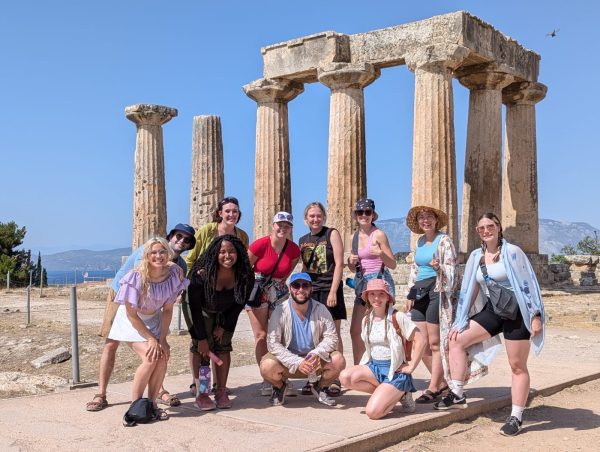Repairs made to Vandenberg, OC following elevator entrapments
The east elevator in Vandenberg Hall has had to be serviced recently. The campus has seen a series of elevator entrapments since the beginning of the year.
Following a string of elevator entrapment incidents throughout the month of January, repairs have been initiated in response to malfunctioning equipment in East Vandenberg Hall (VBH) and the Oakland Center (OC), while the causes behind entrapments reported within Hamlin Hall (HH) and Hillcrest Hall (HCH) were determined to be unrelated to equipment.
As reported in a recent police files article, VBH was the site of the majority of entrapments in a month-long series of similar incidents across campus, including other entrapments in the OC, HH and HCH — the former two of which are also serviced through Schindler Group, while Otis Elevator services the latter.
Schindler Group did not respond to requests for comment, though details surrounding recent repairs they’ve made in the wake of these incidents were obtained by The Oakland Post through documents provided by OU Facilities Management.
Schindler determined a faulty board to be the culprit behind the four recent entrapments in East VBH, replacing this mechanism on Fri., Feb 11. Additionally, a Jan. 10 inspection of the freight elevator in the OC revealed that the door was not closing completely, an issue resolved that day as the company lubricated the door.
Brian Ward, Director of Operations for OU’s Facilities Management department, takes pride in the response afforded to this situation by his department and those external companies they partner with.
“Only skilled tradesmen with the proper licensing are permitted to work on elevators,” Ward said. “That is why we contract with companies who retain the proper training, licensing, and insurance to work on these highly complex machines.”
The Jan. 30 incident regarding an elevator within HH did not prompt a call or follow-up inspection from Schindler Group, as the OUPD determined that the panic button was pushed without response whilst the elevator appeared to be operating normally, with no passengers trapped inside.
Similarly, the entrapment reported from within HCH on Jan. 10 was deemed to be the product of human error rather than equipment failure. Upon reaching the scene, Otis Elevator determined the car to be overloaded with passengers who were jumping.
OU sophomore Drew Kamp was one of four trapped passengers during this incident. He recalls a loud crack and a sudden bounce marking the onset of their entrapment, after two of his roommates jumped at the same time. The elevator was then unable to move, the door unable to be opened.
“I’d never really been stuck in an elevator before, so I didn’t know exactly what was going on,” Kamp said. “I tried holding the red button to contact OUPD and it connected but I couldn’t hear anything. It was super glitchy and I couldn’t understand anything that the operator was saying other than [in] bits and pieces, so after a while — probably three [or] four minutes of trying to communicate to one another — we both finally understood what we were saying.”
According to OU Facilities Management, a qualified mechanic is to report to the scene of a stalled elevator within 45 minutes of trapped passengers’ request for help — yet in the case of the Jan. 10 entrapment in HCH, it appears that Otis Elevator did not arrive within this time frame.
“The police officer got there pretty quick — that was within probably ten minutes — but I feel like the elevator mechanic took a little bit longer than 45 minutes,” Kamp said.
Kamp and his roommates made their emergency call at 8:43 p.m. According to Facilities Management records, Otis Elevator was called at 8:52 p.m. and arrived on-scene at 10:02 p.m. — a response time of 70 minutes. OUPD records show that the passengers were freed from the elevator as of 10:06 p.m. What remains noteworthy in reference to this incident, then, isn’t so much an issue on the part of equipment, but rather policy follow through on the part of emergency response.
Reflecting on the recent slew of entrapment incidents, Ward cites age as a factor likely to affect the function of elevators in older buildings — VBH was built in 1967, for instance, with the most recent elevator upgrade taking place in 1999, though state certifications for the machines are current.
Ward stresses that his department takes the proper maintenance of campus elevators very seriously, and encourages students to practice a similar vigilance.
“I hope that [this situation] will remind all elevator passengers to ride responsibly without jumping or trying to compromise the elevator’s functionality in any way,” Ward said.
On Feb. 19, two additional elevator entrapment calls were made from within HH and HCH at 3:18 a.m. and 3:20 a.m., respectively. The Post awaits further details regarding these two most recent incidents.











William connellan • Feb 24, 2022 at 7:55 PM
VBH elevators Did not work Well In 1966
When it opened